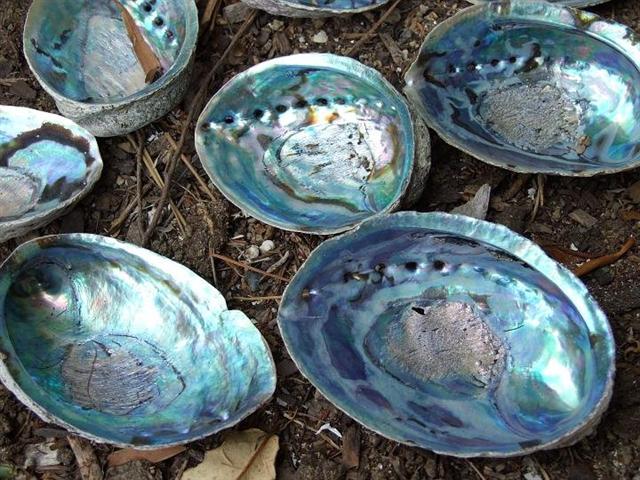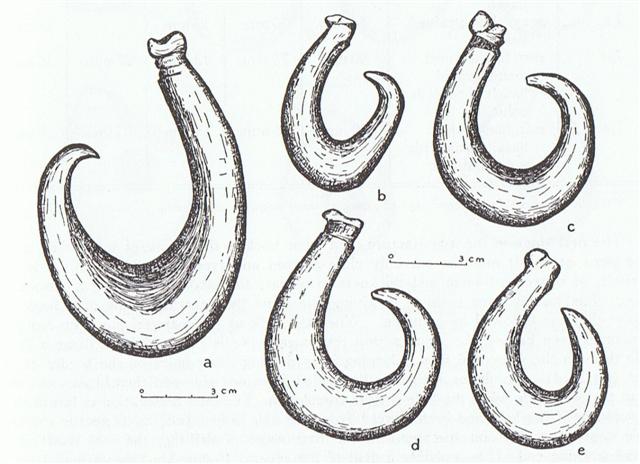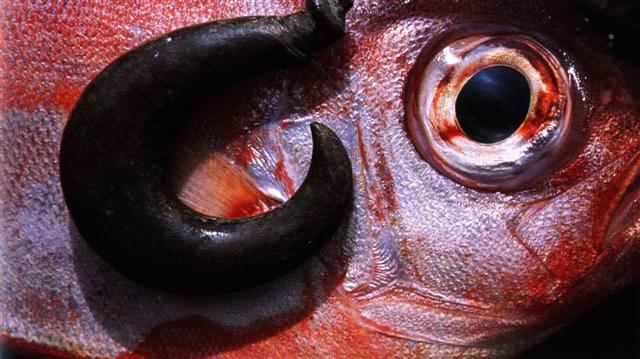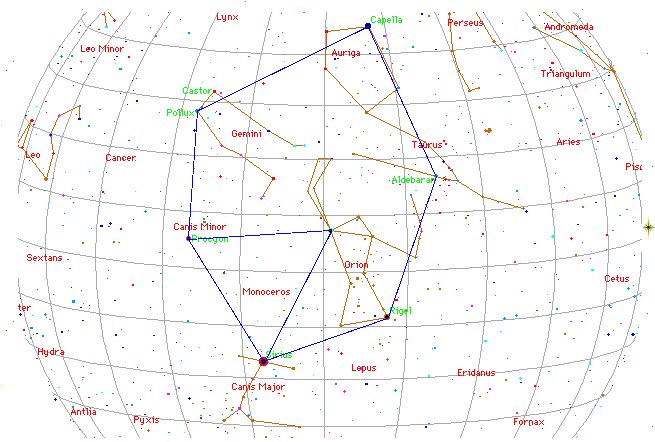In modern western society focus is intent on
division instead of multiplication - separating
everything down to its atoms (and further down) in
order to analyze instead of putting all together in a
harmonious way. Speed and efficiency demands
division of labour instead of working together. But
this will make it impossible to look ahead with
care. For the Polynesians it was easy, in spite of a
complex map of reality they saw it clearly,
because in real agriculture everything is based on cycles:
... For the Maori the past is an important and
pervasive dimension of the present and future. Often
referred to as the 'ever-present now', Maori social
reality is perceived as though looking back in time
from the past to the present. The Maori word for
'the front of' is mua and this is used as a
term to describe the past, that is, Nga wa o mua
or the time in front of us. Likewise, the word for
the back is muri which is a term that is used
for the future. Thus the past is in front of us, it
is known; the future is behind us, unknown. The
point of this is that our ancestors always had their
backs to the future with their eyes firmly on the
past. Our past is not conceived as something long
ago and done with, known only as an historical fact
with no contemporary relevance or meaning. In the
words of a respected Maori elder: The present is a
combination of the ancestors and 'their living
faces' or genetic inheritors, that is the present
generations. Our past is as much the face of our
present and future. They live in us ... we live in
them ...
Manuscript E and the rongorongo texts can therefore
be properly understood only from perceiving the
whole. Its parts were alive and inseparable (Piri-ere-ua)
-
not like the Gemini twins who were separated by the
death of Castor while Pollux lived on.
... In the legends of the
Polynesian Islanders, notably those of the Hervey
group, the stars in the Scorpion, from the two
lettered μ to λ
and υ, were the Fish-hook of Maui,
with which that god drew up from the depths the
great island Tongareva; and the names and legend
that Ellis, in his Polynesian Researches,
applied to Castor and Pollux in Gemini, the Reverend
Mr. W. W. Gill asserts, in his Myths and Songs of
the South Pacific, belong here, and are the
favorites among the story-tellers of the Hervey
Islands. They make the star μ╣
a little girl, Piri-ere-ua, the Inseparable,
with her smaller brother, μ▓,
fleeing from home to the sky when ill treated by
their parents, the stars λ
and υ, who followed them
and are still in pursuit ...

But one such description of this harmonious
whole was different from every other such
description, because of the various limiting areas for incising glyphs. Which caused creativity.
This explains why it is so difficult to find any
point in one text which agrees completely with a
point in another text. Instead we have to look at
other places in the same medium; in the same
rongorongo text or in the same manuscript for that
matter.
The Sirius fish-hook in the G text is a good
example:
|
Te Piringa Aniva (*94 - *106) |
|
4 he ruma. |
5 he tuitui koviro. |
6 he vitiviti. |
7 he marikuru = the Ash |
|
APRIL
29 |
30 |
MAY 1
(*41) |
2
(122) |
 |
 |
 |
 |
|
... The brothers had
no idea what Maui was up to now, as he
paid out his line. Down, down it sank,
and when it was at the bottom Maui
lifted it slightly, and it caught on
something which at once pulled very
hard. Maui pulled also, and hauled in a
little of his line. The canoe heeled
over, and was shipping water fast. 'Let
it go!' cried the frightened brothers,
but Maui answered with the words that
are now a proverb: 'What Maui has got in
his hand he cannot throw away.' 'Let
go?' he cried. 'What did I come for but
to catch fish?' And he went on hauling
in his line, the canoe kept taking
water, and his brothers kept bailing
frantically, but Maui would not let go.
Now Maui's hook had caught in the
barge-boards of the house of Tonganui,
who lived at the bottom of that part of
the sea and
whose name means Great South; for it was
as far to the south that the brothers
had paddled from their home. And Maui
knew what it was that he had caught, and
while he hauled at his line he was
chanting the spell that goes: O Tonganui
/ why do you hold so stubbornly there
below? // The power of Muri's jawbone is
at work on you, / you are coming, / you
are caught now, / you are coming up, /
appear, appear. // Shake yourself, /
grandson of Tangaroa the little. The
fish came near the surface then, so that
Maui's line was slack for a moment, and
he shouted to it not to get tangled. But
then the fish plunged down again, all
the way to the bottom. And Maui had to
strain, and haul away again. And at the
height of all this excitement his belt
worked loose, and his maro fell
off and he had to kick it from his feet.
He had to do the rest with nothing on
...
 |
|
Ga2-9 |
Ga2-10 |
Ga2-11 |
Ga2-12 (42) |
|
Mash-mashu-sha-Risū-9 (Twins of the
Shepherd)
θ
Gemini (103.0),
ψ8
Aurigae (103.2),
ALHENA
=
γ
Gemini
(103.8),
ψ9
Aurigae (103.9) |
ADARA (Virgins)
= ε Canis Majoris
(104.8) |
ω
Gemini (105.4),
ALZIRR (Button)
= ξ Gemini
(105.7),
MULIPHEIN (Oaths) =
γ
Canis Majoris
(105.8),
MEKBUDA (Contracted) =
ζ
Gemini
(105.9)
*64.0 = *105.4 - *41.4
|
7h (106.5)
no star listed (106) |
|
July
2 |
3
(*104 = 8 * 13) |
4 (185) |
5 |
|
║June
28 |
29
(180) |
SIRIUS (*41 + *60) |
║July
1 (182) |
|
The
Gregorian calendar was launched by the
Pope Gregory XIII in AD 1582 and its
date ║June 30 corresponded to the place
not only of heliacal Sirius but also to
day when the Button star ξ in Gemini
rose with the Sun. Furthermore, half a
year away was Nunki and the Teapot. |
|
'June
5 |
6
(157) |
7
(*78) |
8 |
|
"May
22 |
23
(*63) |
Vaitu
Potu 24 |
25 (145) |
|
42 |
43 |
44 =
185 - 141 |
45 =
145 - 100 |
|
CLOSE
TO THE FULL MOON: |
|
OCT
29 |
30
(303) |
31
(*224) |
NOV 1 |
|
χ
Oct. (286.0),
AIN AL RAMI (Eye of the Archer) =
ν
Sagittarii
(286.2),
υ
Draconis (286.4),
δ
Lyrae (286.3),
κ
Pavonis (286.5),
ALYA (Fat Tail) =
θ
Serpentis
(286.6)
*245.0 = *286.4 - *41.4 |
ξ Sagittarii (287.1), ω Pavonis (287.3),
ε Aquilae, ε Cor. Austr.,
SULAPHAT (Little Tortoise Shell) = γ
Lyrae
(287.4), λ Lyrae (287.7),
ASCELLA (Armpit) = ζ Sagittarii,
BERED = i Aquilae (Ant.)
(287.9)
*246.0 = *287.4 - *41.4 |
Al Na'ām-18 (Ostriches)
/
Uttara Ashadha-21 (Elephant tusk, small
bed)
NUNKI
= σ Sagittarii
(288.4), ζ Cor. Austr. (288.5),
MANUBRIUM = ο Sagittarii
(288.8), ζ Aquilae (288.9)
*247.0 = *288.4 - *41.4 |
19h (289.2)
λ
Aquilae (Ant.) (289.1),
γ
Cor. Austr (289.3),
τ
Sagittarii (289.4),
ι
Lyrae (289.5),
δ
Cor.
Austr. (289.8)
*248.0 = *289.4 - *41.4 |
|
... This [σ
Sagittarii] has been identified with
Nunki of the Euphratean Tablet of
the Thirty Stars, the Star of the
Proclamation of the Sea, this Sea
being the quarter occupied by Aquarius,
Capricornus, Delphinus, Pisces, and
Pisces Australis. It is the same space
in the sky that Aratos designated as
Water ...

.jpg)
... I
wan't a clean cup, interrupted the
Hatter: let's all move one place on. He
moved as he spoke, and the Dormouse
followed him: the March Hare moved into
the Dormouse's place, and Alice rather
unwillingly took the place of the March
Hare. The Hatter was the only one who
got any advantage from the change; and
Alice was a good deal worse off than
before, as the March Hare had just upset
the milk-jug into his plate ... |
|
Jan 1 |
2 |
3
(368) |
4 |
|
░Dec
28 |
29 |
30
(364) |
31 |
|
'Dec
5 |
6
(340) |
7
(*261) |
8 |
|
"Nov
21 |
22 |
23
(327) |
24
(*248) |
|
*145 |
*146 |
*147
= *288 - *141 |
*148
= *248 - *100 |
For there is another fish-hook glyph to compare with:
 |
|
 |
|
Ga2-11 (41) |
Gb1-18 (247
= 41 + 183 + 23) |
|
║June
30 (181) - heliacal Sirius |
182 |
'Dec
30 (364) - nakshatra Sirius |
|
║Dec
30 (364 = 181 + 183) |
'June
30 (181 = 364 - 183) |
|
23 = precessional
depth from the time of Gregory XIII down
to Roman times |
|
...
Thus was dry land fished up by Maui,
which had lain beneath the sea ever
since the great rains that were sent by
the Sky father and the god of winds. The
Maori people say that the north island
of Aotearoa, which certainly is
shaped much like a fish, is Te Ika a
Maui; and according to some tribes
the south island is the canoe from which
he caught it. And his hook is the cape
at Heretaunga once known as Te
matau a Maui, Maui's Fishhook (Cape
Kidnappers). In some of the other
islands which lie across the sea towards
Hawaiki, the people say that
theirs is the land that Maui pulled up
from below ...
 |
From glyph number 41 (alluding to the epoch of
Bharani) to glyph number 247 there were not 183
right ascension days but 183 + 23 = 206 right
ascension days. The addition of 23 days is due to
the precessional distance down from AD 1582 (at the
Pope Gregory XIII) to Roman
times. 23 * 71 (= 26000 / 365.25) = 1633 years (and
1633 - 1582 = 51 BC, which corresponded to the First
Point of Aries at 0h).
In Roman times the
Julian calendar integrated much of the essential earlier
knowledge, and therefore it should not astound us to
find Gb1-18 (→ 118 = 472 / 4) at the place where α
Columbae culminated:

This was a place where
one half year changed into the next, as illustrated
in the Egyptian X asterism:
.jpg)
Viz. at the Unicorn (Monoceros).
|
1 |
Horn |
α
Virginis (Spica) |
Crocodile |
Oct 9 (282) |
 |
|
2 |
Neck |
κ
Virginis |
Dragon |
Oct 21 (294) |
|
3 |
Root |
α
Librae (Zuben Elgenubi) |
Badger |
Oct 31 (304) |
|
4 |
Room |
π
Scorpii (Vrischika) |
Hare |
Nov 17 (321) |
|
5 |
Heart |
σ
Scorpii |
Fox |
Nov 23 (327) |
|
6 |
Tail |
μ
Scorpii (Denebakrab) |
Tiger |
Nov 30 (294 + 40) |
 |
|
7 |
Winnowing Basket |
γ
Sagittarii (Nash) |
Leopard |
Dec 19 (353) |
|
December solstice (355 = 80 + 275 =
289 + 66 = 282 + 73 = 334 + 21) |
|
8 |
South Dipper |
φ
Sagittarii (?) |
Unicorn |
Dec 30 (364) |
|
... For 'f Sag' (at
the 8th station) I guessed the
meaning was φ Sagittarii, based on
its sound value.
In my
uncertainty I looked for support in
the G text and found φ
Sagittarii precisely 284 days after
equinox, in Gregorian day 364 ... |
From the Columba dove one path rose ahead to Canis
Minor and at the same time another path led down
from Betelgeuze at the right armpit of Orion to Naos
in Argo Navis.

.jpg)
|





.jpg)


.jpg)



.jpg)